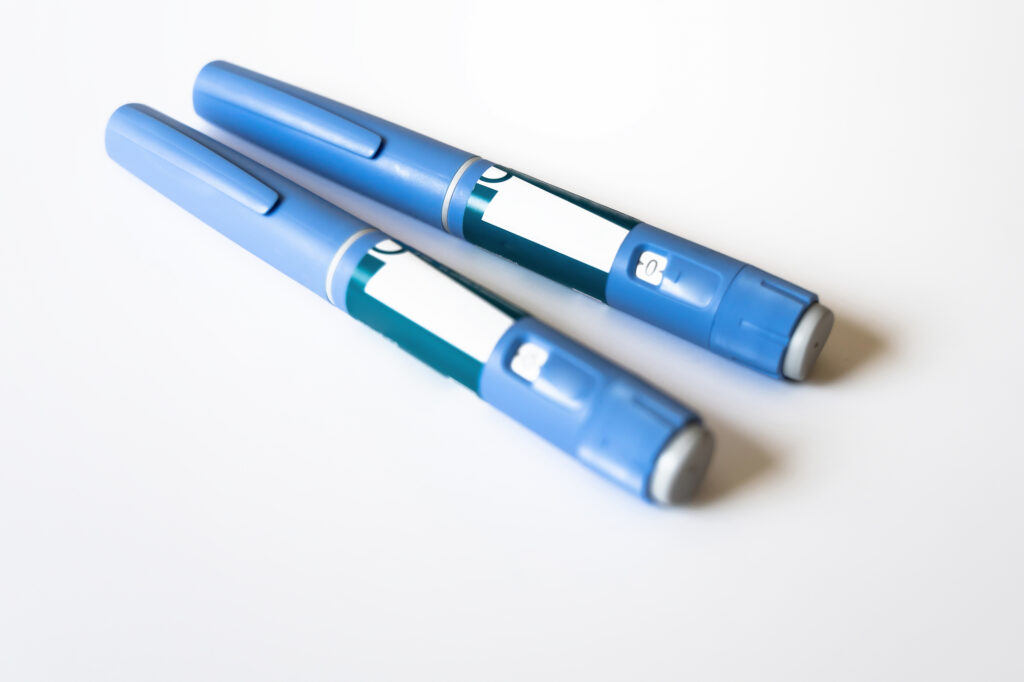You’ve probably heard about weight loss injections like semaglutide and might be tempted to think of them as quick, effortless solutions to shedding those extra pounds.
However, it’s crucial to dispel some common weight loss injection myths and misunderstandings. While they can indeed be effective, they’re not miracle drugs, and they’re also not one-time fixes.
Like any life-altering change, they require a commitment to a healthier lifestyle, an understanding that they’re not for everyone, and even assurances that they’re not full of empty promises.
If you’re curious about how these injections actually work and what results you can realistically expect, it’s important to look closer at the facts behind the hype.
Join us as we explore the truth behind their efficacy and limitations.
Understand What Weight Loss Injections Really Are
Many people believe that weight loss injection drugs like semaglutide instantly melt away fat, but this is one of many misconceptions.
Achieving your weight loss goals involves more than just taking a shot. All of these new drugs work best when combined with a healthy lifestyle and consistency and by understanding that their real function is getting our bodies to work harder, be less hungry, reduce blood sugar, and even slow down our digestion.
Anti-obesity medications like Mounjaro, Ozempic, and Wegovy are, in reality, the brand names for GLP-1 drugs like semaglutide or tirzepatide. What this means is that they are glucagon-like peptide-1 (GLP-1) receptor agonists or drugs that imitate the GLP-1 hormone that our bodies naturally produce after we eat.
The GLP-1 hormone controls the body’s insulin production, appetite, and many other factors that have to do with how much we eat or feel full after it.
These GLP-1 drugs began as diabetes medication several years ago to increase insulin production and lower blood sugar levels. Nonetheless, health care professionals and researchers began to notice that many of these patients with type 2 diabetes also lost a considerable amount of weight.
Semaglutide
Semaglutide is one of the medications originally developed for managing diabetes but has gained recognition for its effectiveness in treating obesity. It works by mimicking the GLP-1 hormone that regulates appetite and calorie intake, thus helping you feel full sooner and reducing your overall appetite.
GLP-1 drugs, like semaglutide, basically do all of this through two paths:
- Makes more insulin: Every time you eat, the GLP-1 hormone is released from your stomach and promotes the production of insulin in response to more glucose levels in your blood. What this class of drugs does is mimic the hormone and make your body produce more insulin than needed, which is why they started as a diabetes drug. People with diabetes benefited greatly from fighting high blood sugar with this.
- Helps Reduce Hunger and Glucagon: But releasing insulin is not the only thing GLP-1 drugs do. The hormone also reduces the production of glucagon, which also slows gastric emptying and tells the brain to make you feel fuller after eating. Semaglutide and other GLP-1 analogue medications replicate these functions, reducing your food intake by lowering appetite and cravings. That’s primarily why it’s become also an anti-obesity medication.
Recent studies have further validated that semaglutide offers more than just aiding insulin production. Its benefits extend to enhanced metabolism and even help reduce the risk of heart attacks, high blood pressure, and even cardiovascular disease.
When used in conjunction with comprehensive weight management programs incorporating exercise and diet, semaglutide has proven to be a crucial medication for adults dealing with obesity, diabetes, and heart issues, improving your quality of life and potentially saving lives.
More facts about semaglutide here.
Tirzepatide
Tirzepatide is another groundbreaking injectable weight-loss medication that, like semaglutide, mimics the GLP-1 hormone in the body. It’s currently sold by Eli Lilly as Mounjaro, as both diabetes and anti-obesity medication.
But unlike semaglutide, there are two ways of achieving this. It replicates both the GLP-1 hormone and the GIP (glucose-dependent insulinotropic polypeptide) hormone. GIP is responsible for improving the use of insulin and also limits appetite and how quickly your stomach empties, so you stay fuller for longer. A 2023 trial showed how tirzepatide helped overweight people lose, on average, around 20.9% of their body weight.
And just like semaglutide, it’s not just about taking weekly injections but combining it with other lifestyle interventions, like diet and exercise.
Other Weight Loss Drugs
Besides tirzepatide, several other injection drugs available today aim to aid in weight loss by targeting different aspects of the body’s metabolism and appetite control.
- Liraglutide, much like semaglutide, mimics hormones that control appetite, but it is typically prescribed at a lower dosage. It has similar effects, such as promoting a feeling of fullness after meals, decreasing cravings, and slowing down stomach emptying. However, clinical trials revealed that this anti-obesity medication led to a higher incidence of side effects relating to gallbladder problems.
- Retatrutide is an experimental weight loss medication that is currently in the trial phase but shows great potential. Unlike the others, it is designed specifically for weight reduction in adults and is not intended for diabetes management. It employs a three-pronged approach that targets GLP-1, GIP, and GCGR receptors involved in regulating glucose levels and metabolism. Its aim is not only to decrease food intake, appetite, and weight but also to boost energy levels and metabolism.
As you explore these options, remember that knowledge is power. Understanding the facts about weight loss drugs helps you make informed decisions and better serve those seeking guidance on their weight loss journey.

Weight Loss Injection Myths, Facts, and Misunderstandings
You might’ve heard that weight loss injections are a magic solution or magic pill to shedding pounds without effort. Or perhaps you fear the opposite, in which they’re useless, and you only experience the negative side-effects associated with the drugs.
Let’s clear up some common myths and set the record straight on what to realistically expect from these medications.
Myth 1: I Can Lose Weight Just With Injections and Not Diet or Exercise
We’ve been insisting on this point throughout the article, and we’re going to continue.
Despite the popularity of weight loss injections like semaglutide, relying solely on them without incorporating a healthy diet or exercise won’t deliver optimal results. It’s essential to understand that these injections are tools to assist you, not magic solutions. To truly benefit others and yourself, combining these injections with healthy habits is crucial.
Here’s why diet and exercise remain key:
- Holistic Health: While injections can help manage appetite, they don’t provide all the nutrients your body needs. A balanced diet ensures you get essential vitamins and minerals.
- Sustainable Results: Regular exercise not only aids in burning calories but also strengthens muscles, improves heart health, and fights heart disease, which injections alone can’t achieve.
- Mental Well-being: Regular physical activity boosts endorphins, enhancing your mood and mental clarity. This holistic approach supports not just physical but also emotional well-being.
Myth 2: The Shots Are Over After You Lose The Desired Weight
You must administer semaglutide injections, or any GLP-1 analogue medications, weekly and continuously for them to be effective and have permanent weight loss. The regimen is vital in managing your blood sugars and moderating food intake, which, over time, helps prevent weight gain.
Consistency is key; these medications are designed to work over an extended period, supporting your body’s natural functions and enhancing your efforts in diet and exercise.
What might change, depending on the treatment, is the dose. Treatment programs tend to start with low doses and then go up from there until you reach your desired weight, and then stay on a “maintenance dose.”
As a patient, it’s crucial to understand that these injections aren’t quick fixes. They require a commitment to regular dosing and a comprehensive approach to health. You’re not just taking medication; you’re stepping into a structured program that demands persistence and patience.

Myth 3: Weight Loss Drugs Work Instantly
While some believe that weight loss drugs offer immediate results, this is far from the truth. In reality, drugs like semaglutide (Ozempic or Wegovy) require time to effectively influence your body’s processes.
Weight loss drugs like Ozempic aren’t magic solutions. They’re tools that, when used correctly and responsibly, can significantly aid in your weight management journey.
Most weeks begin to notice a visible reduction in weight after the first four weeks of treatment. Perhaps sooner, depending on each person’s biology or success in following the regimen.
Remember, your commitment to serving yourself and others by maintaining healthy habits is what truly makes a difference. As you continue to learn and apply these truths, you’ll be better equipped to manage your health effectively and sustainably.
Keep in mind that understanding and patience are your allies in achieving lasting results.
Myth 4: The Only Side Effects Are Nausea and Dizziness
You might think that nausea and dizziness are the only side effects of weight loss injections, but there’s more to consider. While these are common, other side effects associated with weight loss drugs like semaglutide can be significant and impact your overall well-being; even if the odds are low, you’ll suffer severe enough effects to affect treatment.
Patients using semaglutide might experience common side effects, including:
- Nausea
- Diarrhea
- Stomach pain
- Constipation
- Appetite changes
The side effects, although usually controllable, may affect a person’s daily routines and general health. For example, many individuals experience nausea and gastrointestinal issues soon after receiving the injections, which can be treated with anti-nausea medication. These effects tend to diminish in severity and occurrence as the body becomes accustomed to the medication. Nevertheless, it is important to consult a healthcare professional if the symptoms persist or worsen.
Besides gastrointestinal side effects, other potential risks include:
- Fatigue
- Headache
- Dizziness.
- Allergic reaction at the injection site.
More severe but much less common side effects include inflammation of the pancreas, gallbladder problems, kidney issues, and potential thyroid tumors.
Always consider the full spectrum of possible reactions and discuss these with your doctor or healthcare provider to tailor the treatment to your specific needs. This way, you can use weight loss drugs safely and effectively, minimizing risks while maximizing benefits.
Myth 5: Weight Loss Injections Are Only for People With Diabetes or Severe Obesity
It’s a common misconception that weight loss injections are solely for people with obesity or those with type 2 diabetes. In reality, these drugs can be prescribed for a variety of individuals who are striving to manage their weight more effectively, not just those who qualify as obese based on body mass standards.
Weight loss injections are also prescribed for people with weight-related medical conditions who are above a Body Mass Index (BMI) of 27 or higher, not strictly for those classified as obese, which is a BMI of 30 or higher.
In fact, in light of recent research proving that semaglutide drugs also help lower the risk of heart disease and high blood pressure, whether or not patients saw any lost weight, there are renewed calls to health officials and insurance providers to expand access to these drugs.
However, what is true is that there are several medical conditions or cases where a person might be disqualified as a candidate for these weight loss drugs. This includes pregnant women, people with certain types of thyroid cancers, or those with liver diseases.
Understanding who these injections can serve will help you better assist those exploring their options. It’s crucial to approach conversations with empathy and openness, ensuring that you’re not only addressing their immediate needs but also supporting their overall well-being. Weight management is a personal journey, and finding the right tools can make all the difference.
Myth 5: Ozempic, Wegovy, Saxenda, Mounjaro Are All The Same
Many people mistakenly believe that Ozempic, Wegovy, Saxenda, and Mounjaro are interchangeable, but each weight loss drug functions uniquely in managing weight. You must understand these differences to effectively help those seeking weight loss solutions.
Ozempic and Wegovy, both containing the active ingredient semaglutide, primarily target blood sugar control alongside weight loss. However, Wegovy is specifically dosed and approved for chronic weight management, whereas Ozempic is generally prescribed for type 2 diabetes management. This distinction is vital in guiding correct usage.
Saxenda operates on a different mechanism, using liraglutide to mimic an appetite-regulating hormone, which helps decrease hunger and calorie intake. Unlike semaglutide-based drugs, Saxenda is often used when specific diabetes treatments aren’t required, focusing more directly on weight control.
Mounjaro, known generically as tirzepatide, combines actions affecting both glucose control and weight management, making it a unique option among these medications.
Myth 6: I Can Just Use Generic Versions Cheaper
Despite the popularity of weight loss injection drugs like Ozempic and Wegovy, no generic versions are available. Yet. This fact is important for you to understand, especially if you’re exploring cost-effective solutions for weight management.
The original manufacturers hold patents that prevent others from making generic versions. This exclusivity period allows the developers to recoup research and development costs. The patent for those two brand drugs, Ozempic and Wegovy, does not expire in the U.S. until 2030.
Understanding these points helps dispel myths about weight loss injections and sets realistic expectations about the availability and pricing of these weight loss solutions.
What is available are compounded versions of these medications. Compound pharmacies take semaglutide or tirzepatide and create personalized doses for patients looking for a more affordable but just as safe and effective version of the treatment.
Stay informed and patient; the landscape of weight loss medications, including the availability of more affordable generics, will evolve with time.
Myth 7: They’re Available Over the Counter and For Use By Anyone
Neither semaglutide nor any other GLP-1 drugs are available over the counter. They can only be prescribed by a physician for the approved uses or potentially beneficial treatment. But it’s always, and only available through a prescription.
When a drug is prescribed as treatment for a medical condition that it hasn’t been officially approved for but has been deemed safe by the FDA in general, that use is considered to be “off label,” which is what their use for treating weight loss was called before the FDA also recently approved them for that use.
Start Your Weight Loss Journey With Boston Medical Group
Ready to ditch the weight loss injection myths and kickstart your weight loss journey? At Boston Medical Group, you’ll find that our weight loss injection treatment program isn’t a magic fix—it’s a science-backed tool designed to work alongside your commitment to a healthier lifestyle.
It’s time to tackle those pounds with a balanced diet, regular exercise, making healthy lifestyle changes, and our expert support. Together, we can achieve the lasting results you’ve been aiming for.
Join us, and let’s get started on a real path to weight loss.

